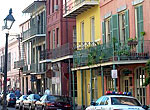They’re easy to overlook, with home prices plunging from Manhattan to Los Angeles and almost everywhere in between. But look at the smaller metros where housing bubbles never took shape, and you’ll find some of today’s strongest markets.
Boulder, Colo.; Fayetteville, N.C.; Pittsburgh; Little Rock; and other slow-but-steady metros are now among the nation’s safest markets, and many of the homes in those markets continue to appreciate, if only modestly.
These are metro areas “where folks didn’t bake 10% to 12% increases into their financial expectations,” said Stan Humphries, chief economist at real estate site Zillow.com. “That was a good expectation to have.”
Working with data from Zillow.com, BusinessWeek came up with the strongest housing markets by ranking metro areas based on the share of single-family homes in which values rose in the second quarter compared with the second quarter of 2008. In the top-ranked metro, Boulder, an affluent Denver suburb that is home of the University of Colorado at Boulder, 59.39% of homes appreciated during the past year, and the median home value rose 2.12% on a year-over-year basis.
No. 1: Beautiful Boulder
Boulder was one of several college towns on the list, which also included a few military towns such as Fayetteville, N.C., and Jacksonville, N.C. Both government and university jobs have been relatively reliable during this recession. Affordability also seems to be a plus in this economy. Oklahoma City; Tulsa; Binghamton, N.Y.; Springfield, Ohio; Cumberland, Md.; and most other metros on the list have median home prices below $200,000 (some are under $100,000).
Boulder has several factors working in its favor. The town has controlled growth by putting limits on development and by acquiring more than 50,000 acres of open space for a greenbelt that surrounds the town. With the boundary of the Rocky Mountains to the west, the supply of new homes has been restricted.
Boulder’s economy and housing market have slowed, but the University of Colorado provides jobs and a steady flow of tenants for the area’s many rental homes. Demand for housing is also strong in part because the area is so pretty, said Tom Thibodeau, global real estate capital markets professor at the University of Colorado.
“Every year 5,000 undergraduates enter, and they don’t want to leave when they graduate,” Thibodeau said.
New Orleans Thrives on Construction
The housing market in New Orleans, which ranked third on the list, has stayed relatively strong because of the rebuilding work after Hurricane Katrina, funded in large part by government subsidies. But demand for housing is also growing as people return to areas that were flooded after the levees broke in 2005.
Employment in New Orleans was down just 0.2% in the first half of the year, said Loren C. Scott, professor emeritus of economics at Louisiana State University. But construction-related jobs are among the only bright spots in the local economy. Many corporations, fearing that the levees being rebuilt are untested, have been reluctant to move into the city, he said.
“New Orleans has avoided some of the larger problems of the national economy,” Scott said. “Normally, New Orleans would have been down much more if it didn’t have the post-hurricane construction activity.”
Metros in Upstate New York, where prices have always been affordable, have also stayed relatively strong. Binghamton, home of Binghamton University, part of the State University of New York system, came in at No. 4 on our list. The housing market here has started to slow and will likely be impacted by nearly 1,000 announced layoffs at the nearby Lockheed Martin (LMT) facility in Owego.
Since the median home value is only about $112,000 and the supply of available homes is limited, prices probably won’t plummet. Builders concentrated in more lucrative markets during the housing boom.
“We don’t have new homes just sitting empty,” said Jennifer Arbach, president of the Greater Binghamton Association of Realtors. “We always thought it was a thorn in our side that we didn’t have new construction, but it turns out to be a blessing in disguise. When other markets crashed, we kept on doing business.”
Here are the top 10 strongest housing markets in the U.S.:
1. Metro: Boulder (Colo.)
 |
Share of homes with increasing values: 59.39%
Median value: $347,200
Annual change: 2.12%
Quarterly change: 3.86%
Boulder, about 35 miles northwest of Denver, has had a relatively stable housing market, in part, because it is home to strong employers, including the University of Colorado, as well as a base of affluent residents. The supply of homes is limited in Boulder by the mountains to the west and its tens of thousands of acres of protected open space.
2. Metro: Spartanburg (S.C.)
Share of homes with increasing values: 56.81%
Median value: $106,900
Annual change: 1.81%
Quarterly change: 2.15%
Spartanburg, about 75 miles west of Charlotte, is home to the world headquarters of Denny’s restaurant chain and three colleges—Converse College, Spartanburg Methodist College, and Wofford College. It has the state’s highest per capita college student population. College towns such as Boulder, Colo., and Spartenburg have been somewhat buffered from the downturn because the schools provide solid jobs and a steady flow of apartment and home renters.
3. Metro: New Orleans
 |
Share of homes with increasing values: 53.62%
Median value: $148,000
Annual change: -0.61%
Quarterly change: 0.66%
New Orleans’ market is unique because of the impact of Hurricane Katrina in 2005. Construction is booming in the area thanks to federal incentives, insurance money, and private investment. Louisiana also benefits from having a strong energy sector and a limited number of the risky loans that were popular in the states with the biggest housing bubbles.
4. Metro: Binghamton (N.Y.)
Share of homes with increasing values: 53.61%
Median value: $112,300
Annual change: 4.45%
Quarterly change: 1.54%
Binghamton has had a relatively stable housing market. It didn’t reach great heights during the boom and hasn’t crashed either. The city in upstate New York is home to Binghamton University, one of the nation’s highest-ranked public universities. The area also has an opera company, minor league baseball, and nearby hiking and fishing opportunities.
5. Metro: Fayetteville (N.C.)
 |
Share of homes with increasing values: 53.23%
Median value: $119,800
Annual change: 13.12%
Quarterly change: 2.22%
The economy in Fayetteville, located near Fort Bragg and Pope Air Force Base, is heavily dependent on the military. It also has seven museums, three colleges and universities, golf courses, and a historic downtown.
6. Metro: Pittsburgh
Share of homes with increasing values: 48.80%
Median value: $108,700
Annual change: -2.89%
Quarterly change: 0.12%
Pittsburgh, once a thriving steel town, now has a more diversified economy that includes biomedical, health, and education. Major employers include the University of Pittsburgh and Alcoa.
7. Metro: Little Rock
 |
Share of homes with increasing values: 46.96%
Median value: $121,200
Annual change: 0.04%
Quarterly change: 2.55%
Little Rock, the state capital, is a strong economy. The area has university, health-care, and government jobs and has a growing wind energy industry. Little Rock did not participate in the housing bubble and has remained steady since it burst elsewhere.
8. Metro: Gainesville (Ga.)
Share of homes with increasing values: 46.63%
Median value: $139,100
Annual change: 4.18%
Quarterly change: 4.50%
Gainesville, located on the shores of Lake Lanier about 50 miles northeast of Atlanta and 40 miles northwest of Athens, is known as the chicken capital of the world and even has a statue of a chicken topping an obelisk in the downtown. The area also has jobs in higher education, medicine, and retail.
9. Metro: Burlington (N.C.)
 |
Share of homes with increasing values: 45.41%
Median value: $125,200
Annual change: 4.61%
Quarterly change: 0.33%
Burlington, a couple of hours northeast of Charlotte and a few hours from the Blue Ridge and Great Smoky Mountains, was once a thriving textile town. Today its large employers include LabCorp, a major clinical laboratory company. Honda plans to build a plant in Burlington, where it will manufacture light commercial jets.
10. Metro: Oklahoma
Share of homes with increasing values: 40.20%
Median value: $119,600
Annual change: 4.94%
Quarterly change: 1.85%
The Oklahoma City metro area, which includes the state capital, is one of the nation’s most affordable metros. The area is home to Devon Energy and Chesapeake Energy and has strong oil and natural gas sectors.
Did you know that if you subscribe to our website, you will receive email notifications whenever content changes or new content is added.
1. Enter your e-mail address below and click the Sign Me Up button.
2. You will receive an email asking you to confirm your intention of subscribing to our site.
3. Click the link in the email to confirm. That’s all there is to it! Note: if you wish to unsubscribe from our site, click the unsubscribe link at the bottom of the email you received.
Then indicate you no longer wish to receive our emails.
Thank You
Prisonbreakfreak.com Team